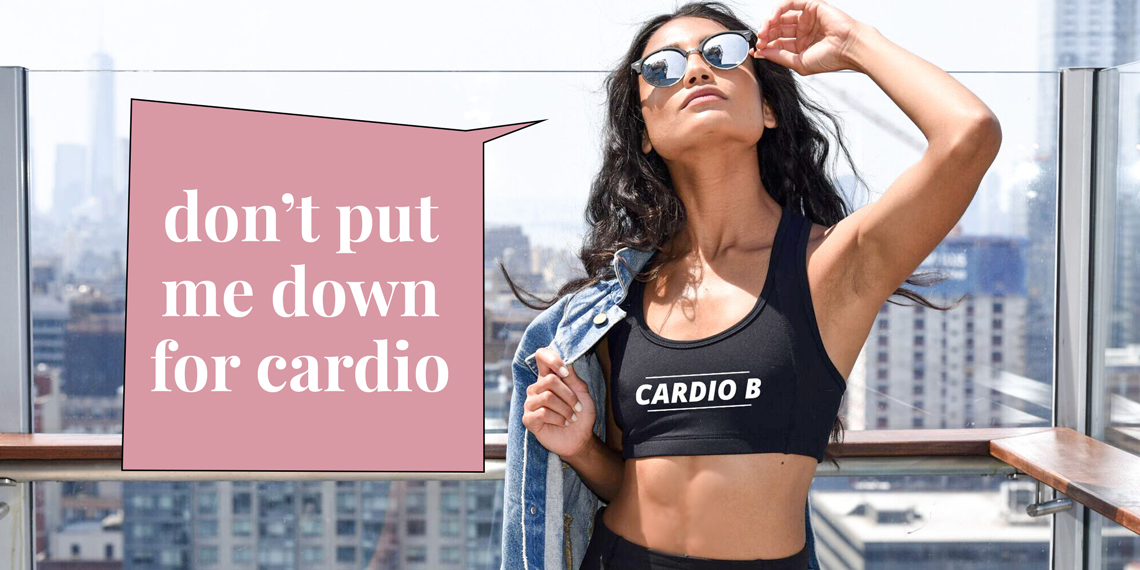When you’re already going to the trouble of working out, it can feel like unfathomable betrayal to hear that you should, in fact, be doing a completely different workout. Or at least, that’s the logic I once used to justify doing nothing but yoga for six months, while slowly ceasing to fit into my pants. As someone who really wants to be fit but is decidedly not an athlete, I’ve spent a of time and energy on different gyms, classes, and even trainers and physical therapists over the years, trying to find the perfect workout that would turn me into a *fit person* once and for all. As all those professionals have explained to me repeatedly, not all workouts are created equal. What’s more, switching up your workout routine has consistently proven to show better results. So, while I reluctantly follow this advice myself, here are my past trainers’, physical therapists, and preferred internet authority’s tips for knowing when it’s time for a new workout routine.
1. You’re Not Getting Sore Anymore
Sorry! But also, not really because you should know this. If a workout stops making you sore, it’s not a sign that you have ascended to a new level of athleticism in which your muscles are no longer capable of strain. It does probably mean that you have strengthened the specific muscles involved in this particular workout (congrats!). But if you don’t up the difficulty of the workout, or switch out the muscles you’re working on, you won’t keep seeing results. At best, you’ll maintain the very specific strength you’ve gained. But even that isn’t a guarantee, since you’re continuing to do a workout that was appropriate (and difficult!) for you in a less fit state. Trainer Faheem Mujahid explains it as your body realizing “it doesn’t need to expend as much energy anymore:” meaning you burn fewer calories, get less tired, and are less likely to feel sore. Time to level up, b*tch!

2. You’re Getting *Too* Sore
The flip side of the whole soreness thing is that you have to be careful not to overdo it. There’s a difference between it hurting when you laugh the day after an ab routine and needing to strap on a knee brace every time you leave the gym. Fitness instructor Trish DaCosta puts it plainly: “A reoccurring injury or too many injuries is often a sign we’re doing too much of an exercise program.” Pulled muscles, joint pain, or persistent aches are clear signs that your body needs a break. Injuries aside, extreme soreness—or persistent soreness in only a few, select places—also mean you should switch out your routine, or at least add some variety. Trainer Jessica Thiefels stresses the importance of making sure your body feels “balanced in strength,” and adds that “working the same muscles, time and time again” is a bad idea. Muscles need rest periods in order to get stronger; so you’re really just robbing yourself of #gainz if every day is focused on the same body part.
Obvs, if you’re repeating the same workout over and over it’s because you like it, and I get that it’s tough to motivate yourself to make the switch. I once spent two weeks obsessed with barre and loving my life. Then I promptly re-pulled an old thigh injury, and my physical therapist at the time told me that barre was “the worst thing” I could do for my body. The fact that I had just purchased both a “barre so hard” tank and a month-long barre studio membership apparently meant nothing to her. As much as I was dying to be a fancy barre girl, I had to accept that my body just wasn’t built to benefit most from that particular workout.
Me to my useless barre studio membership:

3. You’re Not Getting The Results You Want
So, this goes back to my whole “only doing yoga” period in time—despite feeling like I was gaining weight, or at least sort of…spreading out. Before my yoga phase, I’d been getting most of my workouts in at the gym, where I lifted weights and ran intervals on the treadmill. Then, I moved to NYC and decided a gym was a luxury I could no longer afford. Even though I’d read countless times that yoga is not the most effective calorie-torching workout out there (particularly not when done for 15 minutes at a time in one’s living room), I hated the idea that completing any workout wasn’t enough for my stupid body. I felt more flexible and balanced for sure—but I felt like I was losing muscle, and my clothes weren’t fitting as well.
The point here? Don’t be like me! Yes, some exercise is better than no exercise at all. But that doesn’t mean you can go on a jog and expect your triceps to be more defined after. DaCosta notes the importance of seeing “continued progress” from your workouts, which could come in any of the following forms: “more muscle definition, decreased body fat, more energy, stronger lifts, faster recovery times, weight loss, faster pace, etc.” While yoga was pushing me on some of those fronts, it wasn’t satisfying others. For a fully varied workout routine that pushes you on all these fronts, Mujahid recommends trying for a mix of “cardiovascular, strength, agility and flexibility sessions,” making sure you’re “hitting every muscle group” in a week’s worth of workouts.
If that sounds totally unattainable to you (same girl), take some comfort in knowing a lot of these categories overlap. For example, a HIIT workout could be your lower body workout, and combines a cardiovascular and strength workout. Then you could work your upper body with yoga on alternate days, which would count as your agility and flexibility sessions. Throw in an ab day and you’re done for the week. (And if that sounds like a month’s worth of workouts to you, once again I say SAME GIRL. I’m just the messenger for what the pros are recommending.)
Me during my yoga phase:*

*To be clear, yoga absolutely can and does help people with all kinds of body goals. But my refusal to do any other workout meant I really hit a wall.
This article is not meant to shame anyone out of the workout routine that they’re doing. Everyone who has broken a sweat (on purpose) in the past week: I am proud of you. But I also know firsthand how frustrating it can be to feel like you’re making a huge effort and not getting anything for it. If anything, this article will hopefully inspire you to make a change and find the workout that leaves you sore, satisfied, and not feeling like you need a wheelchair. Everyone’s body is different, and once you find the (healthily varied & not at all overwhelming) routine that works for you, working out will feel 1000% more worth it. I promise.
Images: Giphy (3); Pexels / bruce mars


















































